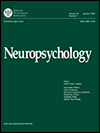Toward an Expanded Taxonomy of Happiness: A Conceptual Analysis of 16 Distinct Forms of Mental Wellbeing
Journal of Humanistic Psychology, Ahead of Print. Recent decades have seen a surge of scientific interest in happiness. However, its theoretical conceptualization is a work in progress. Much of the literature focuses on two main forms: hedonic (encompassing life satisfaction and positive affect) and eudaimonic (encompassing phenomena such as character development and meaning in life). However, this binary has been critiqued as being incomplete, in part because it reflects a Western-centric perspective that overlooks forms emphasized in non-Western cultures. As a result, scholars have begun to highlight other forms besides hedonia and eudaimonia. This article surveys the literature to identify 16 potential forms in total, classified according to whether they primarily pertain to feelings (hedonic, contented, mature, chaironic, and vital), thought (evaluative, meaningful, intellective, aesthetic, and absorbed) or action (eudaimonic, masterful, accomplished, harmonic, nirvanic, and relational). This article thus offers a more expansive, albeit still just provisional, taxonomy of this vital and still-evolving topic.

